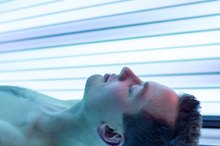Maxi Peel Ingredients
Chemical peels such as a Maxi peel utilize a chemical solution with two active ingredients, tretinoin and hydroquinone, as well as inactive ingredients to improve skin texture, reduce acne breakouts, and reduce scarring and post-acne hyperpigmentation. Maxi peel effectively removes damaged surface skin layers and penetrates down into the pores to treat and prevent mild to severe cases of acne, whiteheads and blackheads. Maxi peels are especially helpful for individuals with facial blemishes, freckles and an uneven complexion. Maxipeel exfoliants are made with different amounts of tretinoin and hydroquinone, thus the precise formula is adjusted according to the severity of the consumer's acne, scarring and photodamage.
Tretinoin
Tretinoin is an acidic derivative of vitamin A commonly known as Retin-A 1. Tretinion's mode of action is via the modulation of gene expression (inhibition of tyrosinase induction ) as opposed to the induction of necrosis in skin cells. By working at the cellular level, tretinoin is effective in increasing skin cell turnover, reducing acne breakouts and producing youthful, exuberant resurfaced skin cells. Additionally, tretinoin effectively lightens your skin by suppressing melanocytes, which are responsible for skin pigmentation. Clinical studies have proven tretinoin to be effective at reducing hyperpigmentation, skin surface roughness, and wrinkles and fine lines. Upon initial usage of tretinion, about 50 percent of users experience an increase in breakouts, burning sensation, peeling and other forms of skin irritation. However, are there no real studies on the possible long-term consequences of using tretinoin
- Tretinoin is an acidic derivative of vitamin A commonly known as Retin-A 1 as opposed to the induction of necrosis in skin cells.
- By working at the cellular level, tretinoin is effective in increasing skin cell turnover, reducing acne breakouts and producing youthful, exuberant resurfaced skin cells.
Hyroquinone
Does Kojic Acid Cause Acne?
Learn More
Hydroquinone is a strong inhibitor of melanocytes, thus preventing skin cells from producing melanin. By merely lightening the skin as opposed to bleaching it, hydroquinone disrupts the synthesis and production of melanin, which can lead to hyperpigmentation. Consequently, hydroquinone is used topically to lighten skin discoloration or hyperpigmentation caused by acne, freckles or melasma. Hydroquinone concentrations greater than 2 percent require a prescription from a doctor, and concentrations of 4 percent or higher are banned in the United States. On its own, hydroquinone is not particularly effective at lightening extreme hyperpigmentary disorders. Thus tretinoin is used in combination with hydroquinone to improve its efficacy. Trentinoin acts as a penetration enhancer thus working synergistically with hydroquinone to increase skin depigmentation. Hydroquinone's mode of action is via melanocytotoxic chemicals, which oxidize melanocytes into toxic compounds that destroy pigment cells, thus resulting in depigmentation. The mode of action by which tretinoin synergistically works to enhance the melanocytoxic effect of chemicals such as hydroquinone is via the inhibition of glutathione S-transferase-a detoxifying enzyme, which protects skin cells against cytotoxic agents such as hydroquinone--as well as the inhibition of glutathione, which also protects against melanocytotoxic agents. In 2006, the FDA proposed a ban on all over-the-counter preparations with hydroquinone due to studies in rodents showing that it has potential carcinogenic properties.
- Hydroquinone is a strong inhibitor of melanocytes, thus preventing skin cells from producing melanin.
Salicyclic Acid
Salicyclic acid is a beta hydroxy acid used in cosmetics for its anitispetic properties. Salicyclic acid is an effective acne treatment due to its ability to penetrate the follicle, ridding the pores of acne-causing bacteria. Additionally, salicylic acid has exfoliating properties, encouraging the shedding of dead surface skin cells within the follicle, thus preventing the clogging of pores and effectively preventing whiteheads, blackheads and acne breakouts.
Related Articles
References
- Tretinoin.org: Tretinoin Gel--Drug Description, Indications and Administration
- Davis EC, Callender VD. Postinflammatory hyperpigmentation: a review of the epidemiology, clinical features, and treatment options in skin of color. J Clin Aesthet Dermatol. 2010;3(7):20-31.
- Fabbrocini G, Annunziata MC, D'arco V, et al. Acne scars: pathogenesis, classification and treatment. Dermatol Res Pract. 2010;2010:893080. doi:10.1155/2010/893080
- Kubba R, Bajaj AK et al. Postinflammatory Hyperpigmentation in Acne. India Journal of Dermatology, Venereology and Leprology. 2009;75(7):54.
- Sharad J. Glycolic acid peel therapy - a current review. Clin Cosmet Investig Dermatol. 2013;6:281-8. doi:10.2147/CCID.S34029
- Sarkar R, Arora P, Garg KV. Cosmeceuticals for Hyperpigmentation: What is Available? J Cutan Aesthet Surg. 2013;6(1):4-11. doi:10.4103/0974-2077.110089
- Sofen B, Prado G, Emer J. Melasma and Post Inflammatory Hyperpigmentation: Management Update and Expert Opinion. Skin Therapy Lett. 2016;21(1):1-7.
- Leyden J, Stein-gold L, Weiss J. Why Topical Retinoids Are Mainstay of Therapy for Acne. Dermatol Ther (Heidelb). 2017;7(3):293-304. doi:10.1007/s13555-017-0185-2
- Bandyopadhyay D. Topical treatment of melasma. Indian J Dermatol. 2009;54(4):303-9. doi:10.4103/0019-5154.57602
- Decker A, Graber EM. Over-the-counter Acne Treatments: A Review. J Clin Aesthet Dermatol. 2012;5(5):32-40.
- Mohamed Ali BM, Gheida SF, El Mahdy NA, Sadek SN. "Evaluation of Salicylic Acid Peeling in Comparison with Topical Tretinoin in the Treatment of Postinflammatory Hyperpigmentation." Journal of Cosmetic Dermatology. 2017 Mar;16(1):52-60.
- Sarkar R, Parmar NV, Kapoor S. "Treatment of Postinflammatory Hyperpigmentation With a Combination of Glycolic Acid Peels and a Topical Regimen in Dark-Skinned Patients: A Comparative Study." Dermatologic Surgery. 2017 Apr; 43(4):566-573.
- Shokeen D. "Postinflammatory Hyperpigmentation in Patients with Skin of Color." Cutis. 2016 Jan;97(1):E9-E11.
Resources
Writer Bio
Adam Scarano began writing as a freelancer in 2010 focusing on the fields of graphic design and media. He graduated from the Metropolitan State College of Denver with a Bachelor of Arts in English with a minor in digital media.









